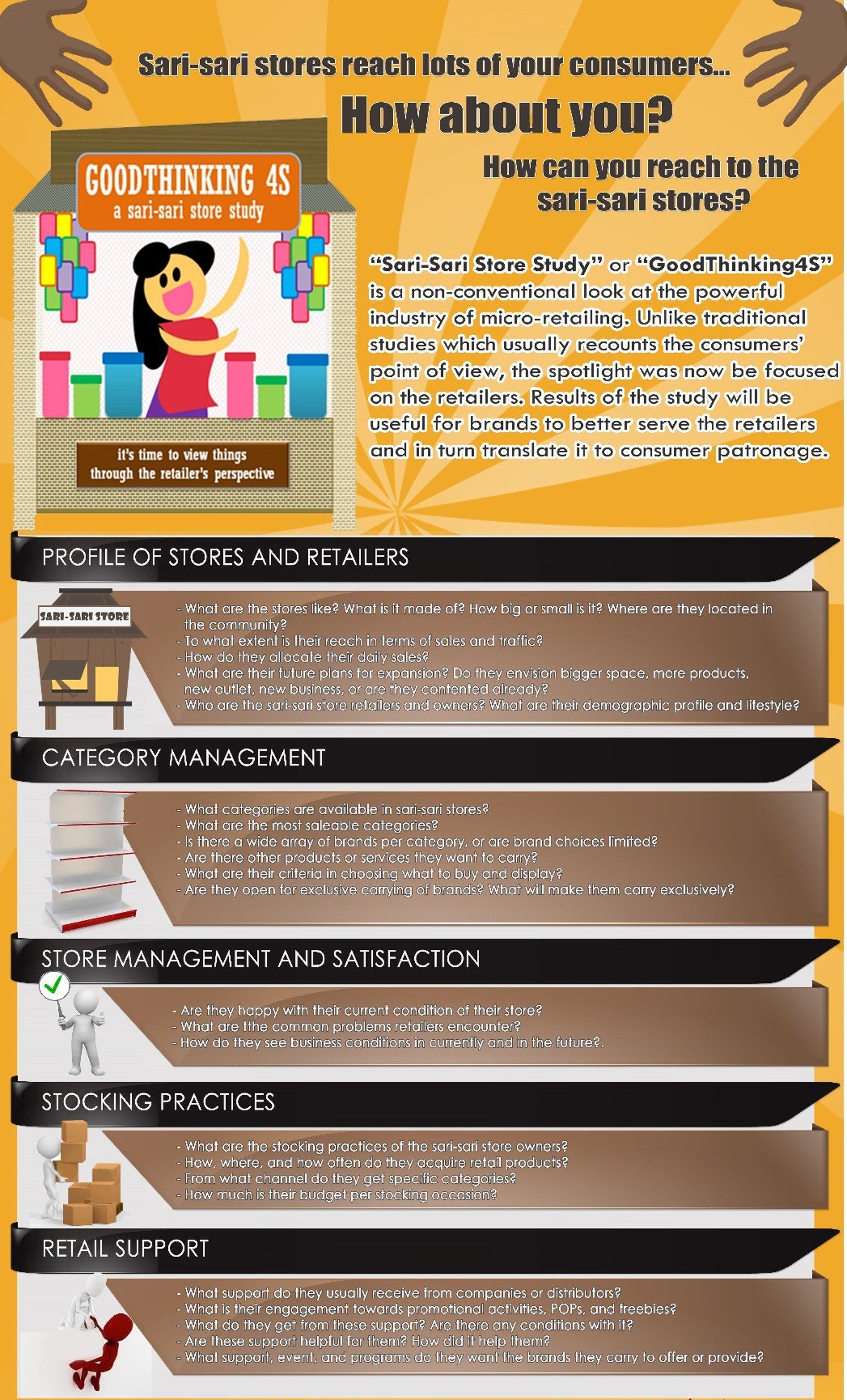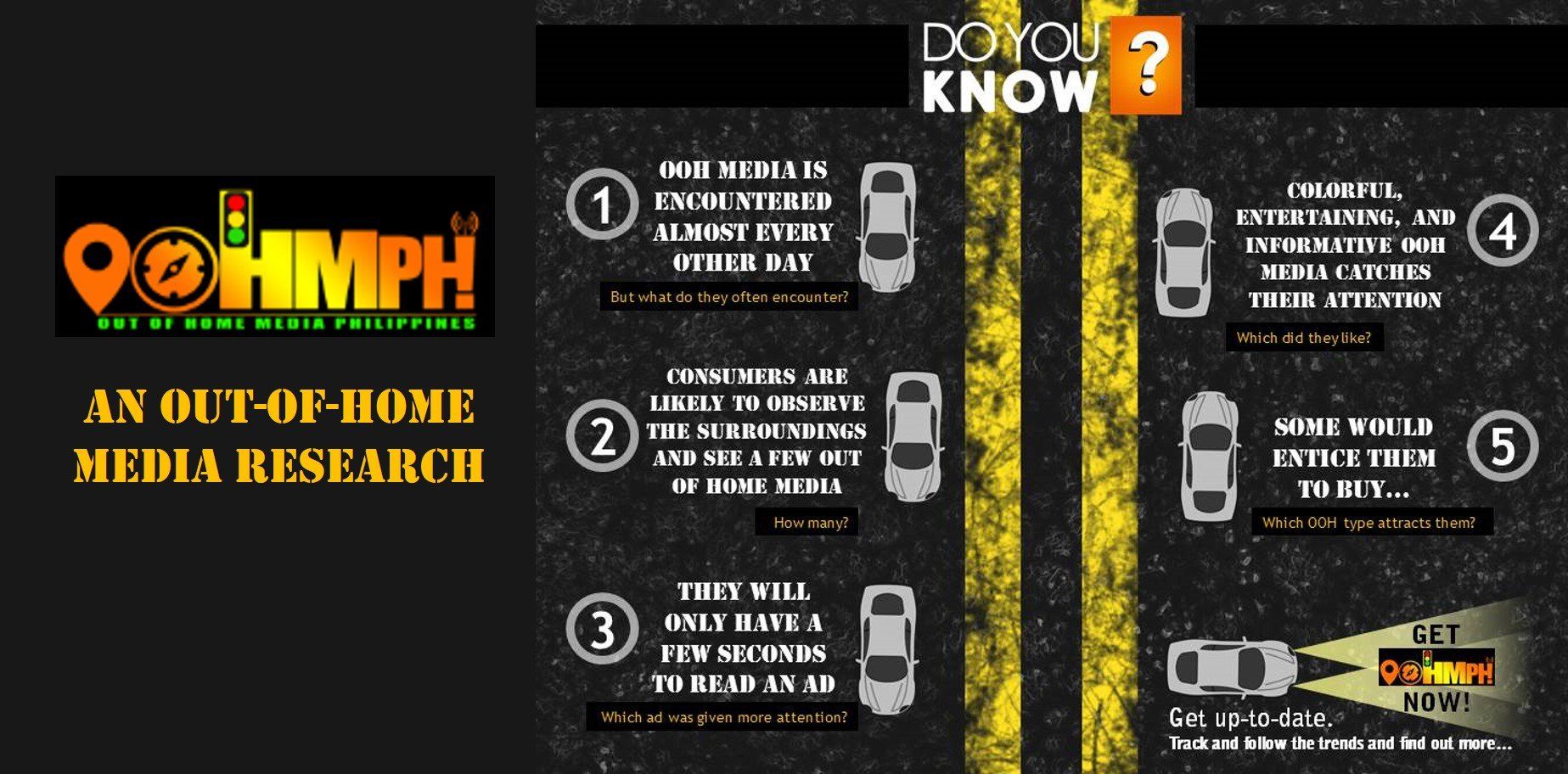Blog Post
Sari-Sari Store Study (4S) 2012
- By GoodThinking Observer
- •
- 01 Dec, 2012

One step, you’ll encounter one, next step, another one! Sari-sari stores? They’re everywhere!
The micro-retail industry is very popular in the Philippines. Sari-sari stores have become essential part of the lifestyle of the Filipinos. They are considered lifeline of the Filipinos and lifeblood of the Philippine retail industry.
As of 2012, there are about 700,000 sari-sari stores in the country with each unit serving an average of 130 individuals. Ease of access, reachable cost, and acceptability of credit are the reasons of the patrons of these micro-retail outlets.
Sari-sari stores also play a major role in the Philippine retail industry for they account for 90% of the retail outlets in the country.
Noteworthy as well is the middle and lower economic classes which represent the great majority of the Filipino population.
Sari-sari stores have become a vital part not only of the daily lives of Filipinos, but as well as their culture. Indeed, the prevalence of sari-sari stores and the market’s continuing patronage on these outlets shed light on the Filipino’s psyche of tingi and sense of community.
This is what “GoodThinking4S” is all about! This “Sari-Sari Store Study” or “4S” is a non-conventional look at the powerful industry of micro-retailing. Unlike traditional studies which usually recounts the consumers’ point of view, the spotlight will now be focused on the retailers. Results of the study will be useful for brands to better serve the retailers and in turn translate it to consumer patronage.
Share
Tweet
Share
Mail
© 2025
GoodThinking Research Inc.



